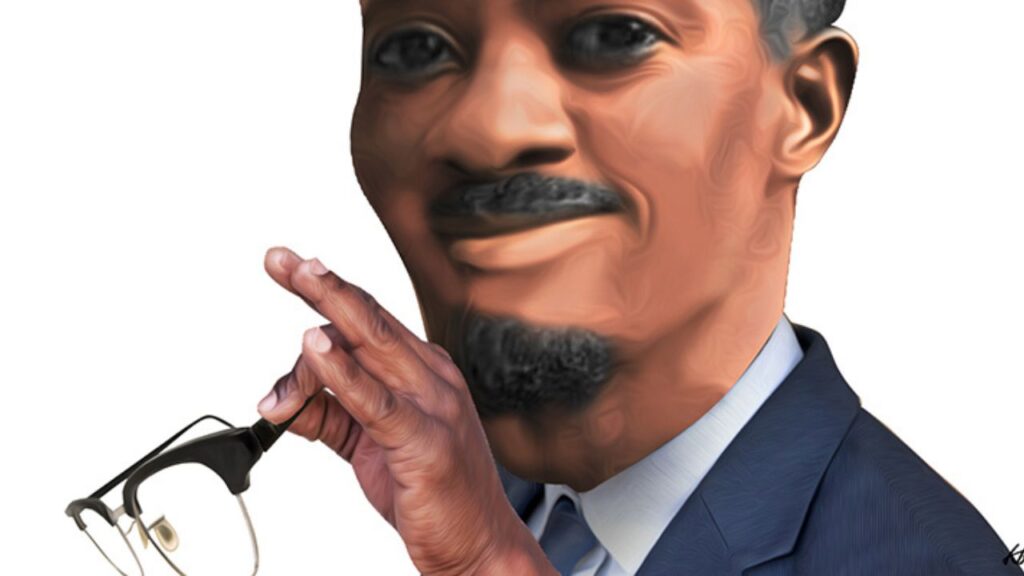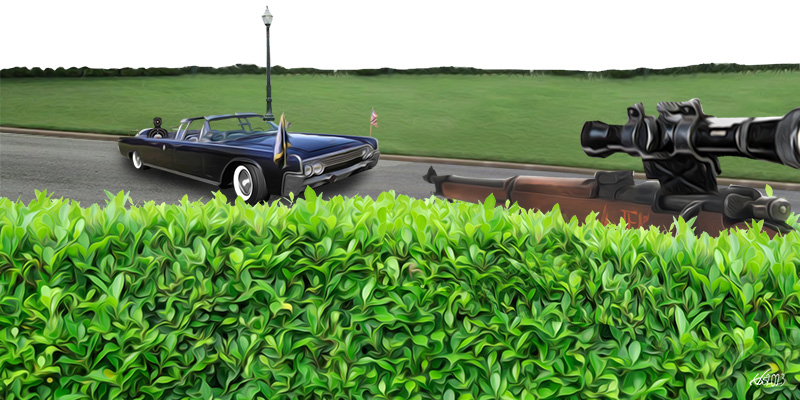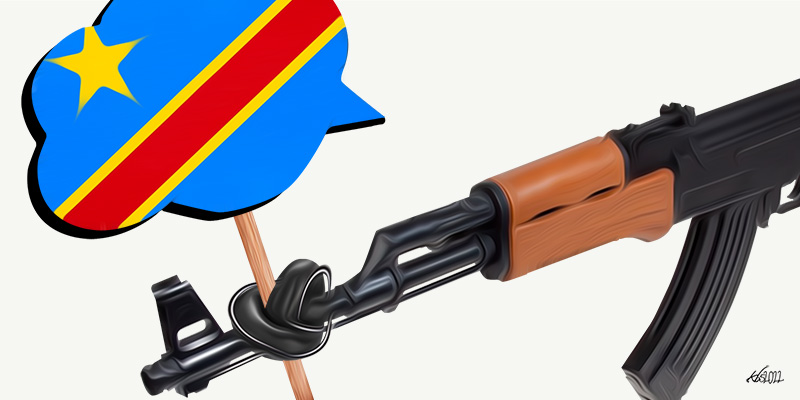Berlin. Saturday, May 9th 2019.
The sun’s appearance has given us a brief respite from the spring’s winds. Me, a Kenyan, walks into the ‘exhibition’ of Egyptian artefacts and beings in a European museum! The chief attraction is the bust of Queen Nefertiti (which means the beautiful one has come). Nefertiti was the queen of Egypt and wife of Pharaoh Akhenaten during the 14th century B.C. Today, the beauty of her bust ‘rests’ in Berlin. Such an Ozymandiac tragedy! A great German friend of mine has paid for my ticket, it was his idea that we come here. The Island of Museums is an imposing cultural feature in the geography of Berlin, even Europe. It has six museums, but today I go Egyptian. The Neues Museum houses the archaeological collections of the Egyptian Museum and Papyrus Collection. Berlin City itself has more than 170 museums. The number is higher when you consider the entire German nation which has the Museum of Chocolates and the Museum of Film among others! I cross the Spree River that marks this museum island, past the throngs of tourists. Asian tourists, are quite visible. They seem to be arriving by the busload. In the precincts, I see a man and a girl with Eritrean or Ethiopian features who appears to be young enough to be his daughter. They are the only African visitors that I will meet today. The girl seems incensed by the man’s affinity for selfies. She looks around trying to distance herself from the man and also in order to gain approval from the teeming humanity.
The image of Queen Nefertiti on a huge banner, by the imposing doors, flags in besuchers ever so lightly. The museum edifice is a relic of the second European nihilist war, marketed as second world war to insinuate euro-exceptionalism. I climb up the flight of stairs. There are bullet marks everywhere on the huge columns in the veranda. Parts of the walls have been restored. Others are left charred and black to memorialize the abyss that man is wont to do. This is exactly just like some of the happenings in there. There is a man whose origins I cannot decipher, certainly he is not a typical European, he inspects the validity of our tickets. We then walk past the security barrier at the door. The first man I meet is a security guard with Cushitic physical features, maybe Somali and he tells me to proceed right for an auto-guide radio and drop my windbreaker jacket in the garderobe. I hear alarms ring in my mind. His dark skin contrasts the whiteness of the visitors in the museums. He looks like an oddity here. For now, that black man can pass.
After this, I proceed to the regal and imposing foyer. It immediately reminds me of my insignificance in history. Boy, how small I matter in a museum. Parts of the 18th-century building that were not destroyed by European tribal wars are still standing, majestic in their architecture and colourful paintings. The building is a testament to German pre-war neo-classical architecture.
In the basement erupts the steady action. There are various artefacts. They are merely auxiliary to the lives of the mummies. I meet other nationalities, Africans, Asians, Arabs Indians, not as researchers, visitors or activists but as security workers. The guards are trained to be conscious of what each visitor does. Killmonger in a British museum in “The Black Panther” is echoed in some way deep down here. I get the impression that the angle of any phone camera, and even the swinging of hands is constantly under scrutiny. Any slight deviation invites swift human attention,
“English or German?” English.
“Sir that is not allowed here.”
The museum is designed for a scientific cultural process. But it is implemented in a carefully orchestrated security operation. Unlike the German Technical Museum, the presences of restrictions are tangible here.
Do not touch that! Dear visitor, please don’t photograph this. You are not allowed to photograph beyond this point. You are speaking too loudly, please tone it down…
Several rail guards dot this museum. The uniformed guards are not armed. The new Germany has police always in close proximity to the civilian. After all there is a European golden hut weighing half a kilogramme in the museum’s third floor. No one leaves Gold unattended. The medieval-era gold hat is touted as a toast of the museum, not Queen Nefertiti’s bust. The gold has direct and deep German history, unlike the Egyptian mummies. The Berlin Gold Hat is said to have served astrological functions during the bronze age in Europe.
Finally, I get to the relocated tombstones. And history hits me hard in the face. There are Egyptian mummies bracing the European summers and, winters. This is an interruption of a critical cultural process of a mummy’s afterlife. The mummies have been raised high for a pinning cultural gaze. The mummies fetishized by the white gaze!
Nah. Not my thang baby. Not my thing.
Let the mummies rest in peace, in the soils of Africa. The open-ended postmodernist treatment of difference must be treated with scepticism. Should one accept things to be infinitely relativist? So that, the presence of cultural beings (not heritages) are not imprisoned in a museum but relocated to their domains of existence in the sands of Africa? What about the Man-eaters of Tsavo from Kenya in an American museum in Chicago?
Blackness is a rarity in official mainstream Berlin, coming from a Kenyan! So, you can understand my Kenyan shock at the generosity of black in a museum space. Schwartzfahren is German for travelling in a train without a ticket, it loosely translates into blackriding. A museum! But why are Africans, Asians and the visibility of the other highlighted in the menial labours of the museum such as keeping coats and working security gigs all over the museum? The multicultural nature of junior workers in the museum arena reinforces the idea of Eurocentric appropriation of others’ practices, decontextualising their significance, and then monetising their presence. Especially when one considers how difficult, it is for these economic minorities to enter fortress Europe. Let white Germans adorn the museum instead of risking displaying Africans in a Europolitan spectacle. The rest of the world should not be inserted in Europe and her archives, merely for special effects. If blacks are restricted from entering Europe, then a museum should be the last space to install a black presence. If the conceptual and administrative tasks in the museum are preserved for Germans then Germans should go the entire length and work out everything, to avoid such embarrassing facades.
Nothing is as problematic as an African working in a European museum. What comes to mind then? I am not saying that they should not work in museums, no. I am only asking this, what about Ota Benga, a Mbuti, the Congolese pygmy, who found himself in the same cage with Dohong the orangutan in the Bronx Museum in 1906? Sarah Baartman, who suffered from steatopygia and who was the subject of European fantasies? What about the six pygmies who visited the Natural History Museum, London in 1906? The Mbuti pygmies whose skeletons are still in Britain? And to work unconsciously as a guard in a space of desecration of African existence is the height of paradox. What about the Zulus who sang and courted each other in a London stage in 1853? We, the blacks, have quite a history in European museums. Africans have been on the show business in Europe for far too long. To see another black body embedded problematically in a German museum brings back the difficult past. I feel like telling them to go away.
But what do I know? Some of these African brothers have climbed over barbed wires, crawled through triple concertina wire fence to get to Europe. Some have talked their way through the criminalised immigration to Europe. Some have just socially moved upwards from washing toilets to washing plates in hotels and presently to guarding their ancestors in museums! And the German museum has the perfect job for these upwardly mobile peoples in the search for political correctness.
Life is a hustle; I am also not saying that black is complete and definite. No! But from Spanish southern enclaves in the African waters, via Belgium and France to the islands of Britain, black has had a depressive tinge and history in establishments of memory and being. The African movement to Europe has been criminalised.
Nonetheless, the Somali brother was friendly. We even performed a quick nod. That crucial gesture which acknowledges that life exists out here, and this life is no smooth matatu ride.
The social capital not accessible to Africans due to the securitized cultural and knowledge resources in Europe defines the rest of the slowly-ebbing Eurocentric century. It was interesting to me see what I thought to have been a typical Turkana ekicholong, only to be told that it was an ancient Egyptian tool. And serving almost the same purpose as an Ekicholong. Ancient Egypt was not entirely obliterated among Africans and their migrations southwards. Some of the practices of the ancient Egypt are still evident in a variety of African traditions even today. For example, the Congolese cubist mask, and totemic coiffures of Senegalese girls in colonial Africa. There is such a thing as an honourable exit. This is the time. Repatriation with an apology for the atrocities and errors on ancestors is in order, at least if there is going to be no retributive approaches on this. Ancestors are spiritual beings not scientific specimen!
Kisumu Museum. Thursday 20th December 2018.
The sun is hot. I am here with my friends, including a German. He has come to visit me in Kenya. I take him to Kisumu Museum. Google maps show that we are close to the museum, but somehow, we keep missing the inconspicuous entrance. We finally ask for direction from one of the boda-boda guys and he directs us to the right entry point. Google was not so far off the mark. The grass is overgrown and the museum’s hidden signpost does not help either. The feeder road into the museum is practically non-existent. We rock ourselves in. There is no proper signage to the ticket sales office. The retail shop in the museum ground sells oddities, things such as Coca-Cola. This is Africa, so I can overlook that, can I not? Heck! the museum is also an events ground for wedding activities. There are no Kisumu Souvenirs, no curios and other standard tourist take-aways. I do not know whether we need to replicate that here, if we have to build a museum that is also inward-looking. Even though we do not have to exclude any group, we can foreground that this museum exists in a space replete with its own rich history. This history seems to be largely lacking in the museum. This museum does not even say that Kisumu was surrounded by archaeological sites, in its general approach to its craft.
Let me slow down, before I get ahead of myself. We pay for our affordable tickets. The lady selling us the tickets is engrossed in her cell phone. Our presence here is located in her footnotes. She speaks to us with her hand on a cell phone. On the red-painted floor, are airtime cards, which have been scratched and discarded. I cannot tell who owned them. We pay up for our tickets, we request for a guided tour. We wait for a couple of minutes as the cell-phone lady shouts above our heads for an available guide. Finally, they locate a young man, who seems like he is fresh out of high school. I got nothing with age, so long as one is competent in what they do. He starts taking us around the museum ground.
At the stand, we visit the various types of fish in the little aquarium boxes. Some of the fishes are definitely too big for their boxes. I am no biologist, but I could see that. The fish have both local and biological names. The museum’s stand on fish is underwhelming. I expect a lot more varieties, now that several species of fish are on the verge of extinction. It is a pity that the Nile Perch which was introduced in the 1950s by the British colonialists in Nam Lolwe (Lake Victoria) is primarily responsible for the near extinction of hundreds of native species. Nile perch was never a native to the lake and her ecosystem and as a result, the Nile perch has had such a devastating impact and even altered the eating habits of fish around the lake. Many people might not know Okoko, Duri, Seu, Ningu, Suma, Fulu, Osoga and other species that the Nile Perch has nearly obliterated. What our guide does not curate is that two million overseas customers ate Nam Lolwe fish every day in the mid-2000s during the boom of fishing! The amount of the fish that was exported was higher than the amount eaten locally, and the consequent protein deficiency for eastern Africans living around the lake. The predominant fish export was the Nile perch.
He does not say that riparian countries, Kenya, Uganda and Tanzania exported approximately 45,000 tons of perch fillets annually with a corresponding value of 170 million Euro in 2003. He probably does not know that when colonialists introduced the Nile perch, Nam Lolwe was abundant with native fish species that were dismissed ‘trash fish’. The British wanted to increase the range of ‘fine sporting and edible white meat with no bones’ in the lake. The communities resisted the adoption of this fish in their culinary cultures. Or that the colonial project would have been incomplete without the accompanying environmental mismanagement. He does not say that the colonial government did an all-out campaign to instil the culture of eating fish, especially Mbuta to all East Africans. The Nile Perch was the ultimate solution to the colonisation of the East African lake cultures.
The Ber Dala refers to Mzee Odero’s home. While I acknowledged that culture is dynamic, I did not see the need of referring to Jaduong (Esteemed elder in Dholuo) Odero’s home as Mzee (old man in Kiswahili) Odero. The difference between Mzee and Jaduong’ is fundamental. Jaduong is the native title that is appropriate in the homestead designed and implemented in the museum at the heart of Kisumu. Mzee would find better context in a contemporary home not exhibited in the museum.
Difficult Questions. Feeble answers.
Therefore, I found myself questioning the portrayal of the African in two random museums. In both instances, a lack of attention to details. The German Museum does not see the need to do away with Africans as workers in the museum or to find other alternatives of framing the black presence in a German museum. It is very difficult for an African to get a work permit to work in Germany. The tokenistic employment of the African in the German museum reinforces the idea of African occupying entertainment slots in European circuits. The African security workers in the German museum appeared to me almost like part of the objects of amusement for the German visitors in the museum.
The Kisumu museum has little interest in the animals that it houses. It even has lesser interest in the history of its location. If the crocodile occupies a pool way too small for its comfort then the people that the museum speaks for and from, occupy even a lesser space in the museum. The museum seemed to me more of an underfunded aquarium. Signs of decay are everywhere. The language of silence is spoken loudly in this museum. There is no curation of the place of Kisumu in regional and national politics.
There is need to curate the cultures and histories of the museum’s catchment area. There is need to showcase Luanda Magere. There is need to showcase the history of Koitalel arap Samoei. There is need to show more about the culinary practices of the people. There is need to not only to rewrite but to popularly assert its complexities and multiplicities. What museum will curate the technologies of Africa before the arrival of the Europeans? What museum will curate a typical day in the life, of say a Luo, Teso, Abasuba, Bukusu, Mnyore, Abagusii in pre-colonial Africa? Perhaps the museum bit more than its mouth could hold. The Kisumu Museum has sat pretty for far too long and perhaps there is a valid case for more specialised museums in Kenya, and other eastern African countries.
One more thing, at the Ber Dala stand, our young guide was not aware of the implications of referring to traditional alcohol drinks as illicit brew. I felt the weight of this cultural violence that he was committing on the traditions of the Luo. Never mind that he is a Luo. The museum could do better than this. There is need to have someone. If the museum finds it important that alcohol is an important theme in the museum, then at the very least it could get the traditional implements of this practise and exhibit it alongside the Ber Dala compound.








